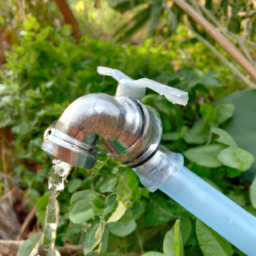Gardening with Kitchen Waste How To Use Water
Table of Contents []
- How To Use Kitchen Waste Water For Gardening
- Potential Benefits of Kitchen Waste Water for Gardening
- Strategies for Collecting and Using Kitchen Waste Water for Gardening
- Tips for Collecting Kitchen Waste Water in Large Quantities
How To Use Kitchen Waste Water For Gardening
Introduction
The environment is in distress and everyone can do their part to help. With the upsurge in gardening due to the pandemic, an overlooked way to help the environment is through managing kitchen waste water. This article outlines 8-12 primary threads on how to use kitchen waste water for gardening while still being eco-friendly.
Potential Benefits of Kitchen Waste Water for Gardening
Inefficient management of kitchen waste water can lead to a variety of environmental issues. Proper management of kitchen waste water can instead be a great method of growing a healthy and robust garden. There are numerous benefits from using kitchen waste water for gardening including:
Conserving Water
One of the greatest advantages to using kitchen waste water for gardening is the conservation of water. Using waste water that would otherwise be flushed down the sink or drain and released into the environment allows you to better conserve water, which is especially helpful for areas with limited water access.
Reducing Wastage
Though kitchen waste water from dishes contains detergents, the water from rinsing dishes can be collected and reused for other tasks, like watering plants. With this water, no further chemicals need to be added, reducing the amount of harmful chemicals and detergents leaked into the environment.
Improving Soil Health
The water collected from kitchen waste is high in nutrients like nitrogen and phosphorous, which are essential for plants. This added nutrient helps improve overall soil health and can promote the growth of healthier plants that are more resilient against diseases and pests.
Replenish Ground Water
Once the kitchen waste water has been used for gardening, the remaining waste water that has already been filtered for such rights can make its way back into the ground water, replenishing it with valuable nutrients. This helps reduce the need for additional water sources from other locations.
Strategies for Collecting and Using Kitchen Waste Water for Gardening
Using kitchen waste water for gardening requires taking the right steps in order to do so safely and effectively. Here are a few strategies one can use to collect and use kitchen waste water for gardening:
Set Up Rain Barrels
Rain barrels are a great way to collect waste water. Place the barrel near a water outlet, like a sink or dishwasher, in order to transport the water directly. In order to maintain ideal conditions, make sure the barrel is covered to keep the water protected from possible contaminants or mosquito infestations.
Filter Kitchen Waste Water
It's important to ensure the water collected is filtered to reduce contaminants and foreign particles. Filtering the water can be done manually through the use of sieves or a mesh-like material.
Test the pH Level of the Waste Water
The pH level of the waste water should be tested in order to ensure it's suitable to water plants. If necessary, consider adding lime or vinegar to adjust the pH of the water.
Tips for Collecting Kitchen Waste Water in Large Quantities
For those with large gardens or collecting kitchen waste water in large quantities, there are a few tips to keep in mind in order to ensure the water is being collected correctly:
Repurpose Used Containers
Large quantities of kitchen waste water can be collected by repurposing used containers, like big buckets. These containers should have lids to keep the water isolated and unsoiled.
Gravity-Fed Systems
To cut down on labor, consider utilizing the use of a gravity-fed system. This type of system has a pipe running from the kitchen sink to the garden, allowing the water to travel unassisted.
Install Rooftop Pipes
To allow the water to travel from the kitchen to the garden with minimal labor and expense, consider installing rooftop pipes. By using the gravitational force, the water is redirected directly to the garden while the rooftop should be slanted enough to prevent any leaks or backwash.
In Summary
Using kitchen waste water for gardening can be a great way to help the environment. This article outlined 8-12 primary threads on how to use kitchen waste water for gardening, including potential benefits, strategies for collecting and using the water, and tips for collecting waste water in large quantities. By implementing these easy steps, you can leverage kitchen waste water and still maintain a healthy and robust garden.

Previous Page
Next Page
